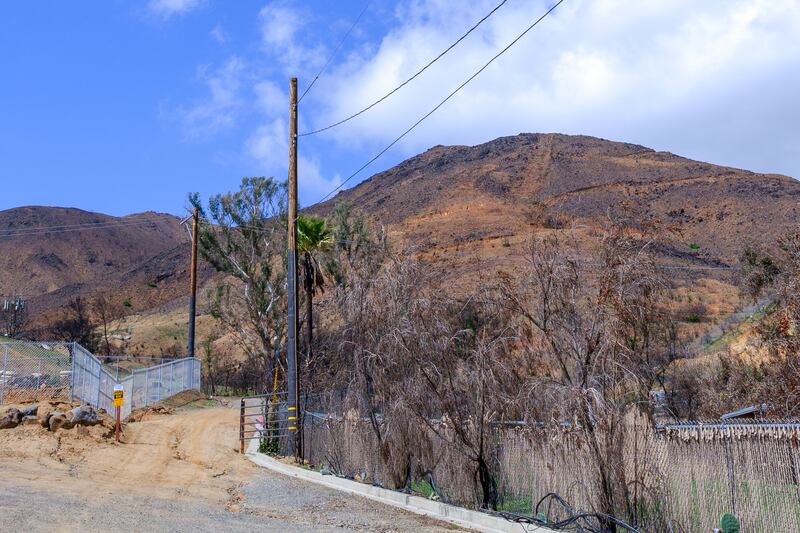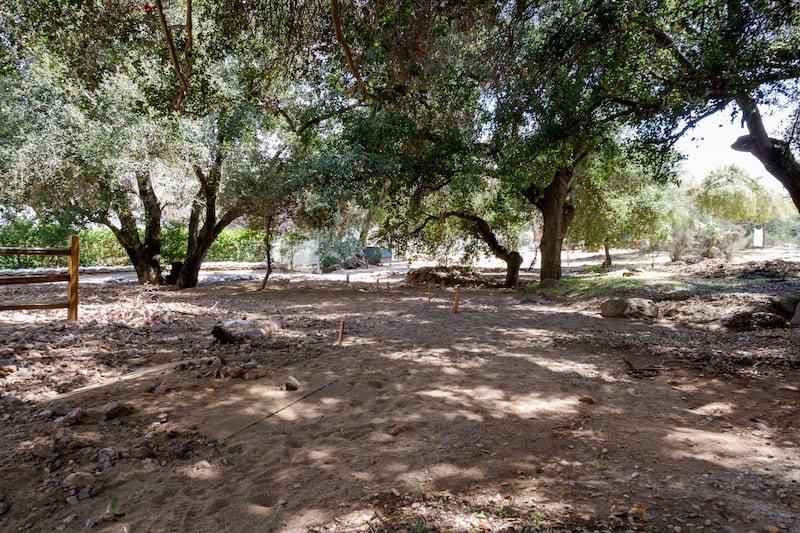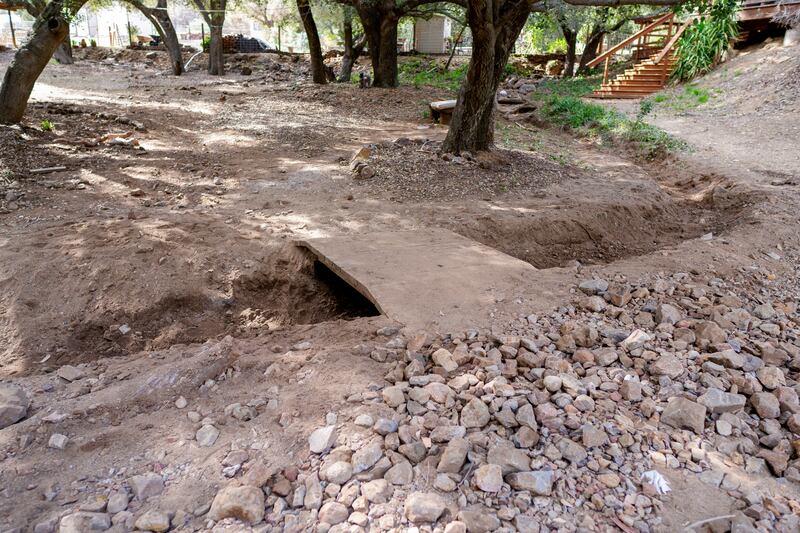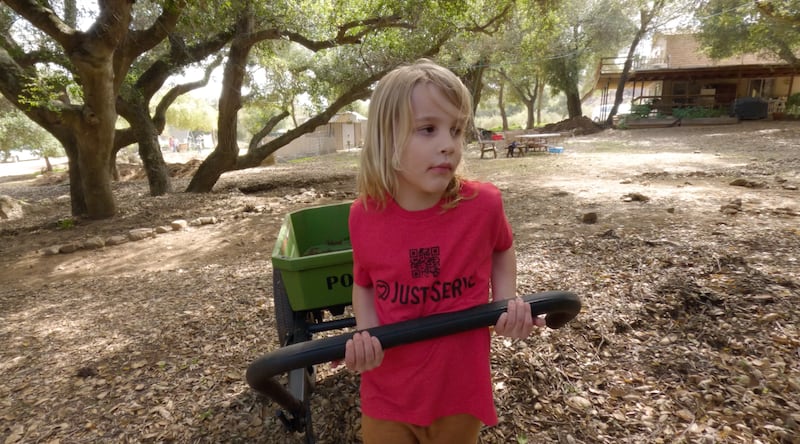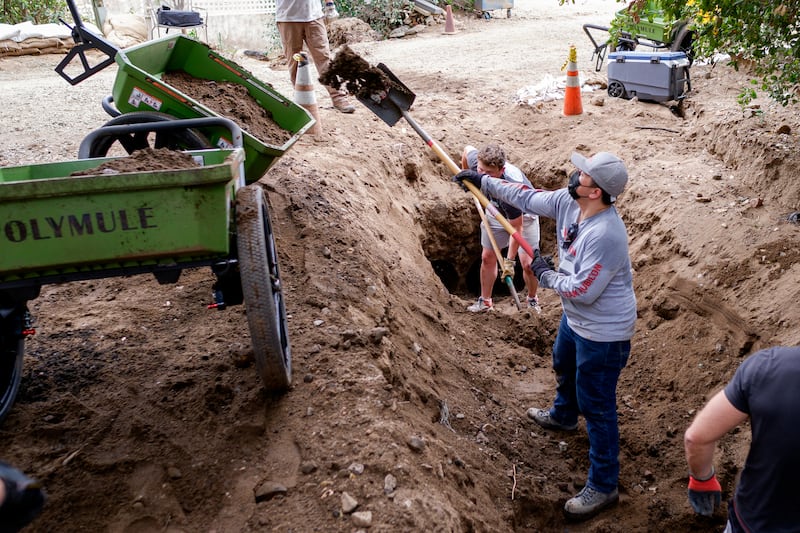This article was first published in the ChurchBeat newsletter. Sign up to receive the newsletter in your inbox each Wednesday night.
Wildfires that race out of mountains and forests to rage through homes and whole neighborhoods often generate meaningful donations, remarkable volunteerism and an empathy that can unite communities, states and nations.
Victims often find that damage left by those fires can flare up again for months and years, creating major obstacles long after the impressive initial humanity begins to fade or redirects to the next disaster.
One California wildfire seven months ago created conditions that continue to revictimize residents in the unincorporated village of El Cariso, between Riverside and Lake Elsinore. On Saturday, a new combination of venerated volunteer groups — Team Rubicon, JustServe and missionaries of The Church of Jesus Christ of Latter-day Saints — rallied to El Cariso’s aid with the help of a new tool that could revolutionize a piece of disaster relief.
How the fire continues to cause new damage months later
Some El Cariso residents lost everything but what they could carry when the Airport Fire ripped through the community of a few hundred people on Sept. 9. Those whose homes weren’t leveled went without power, water and internet for weeks.
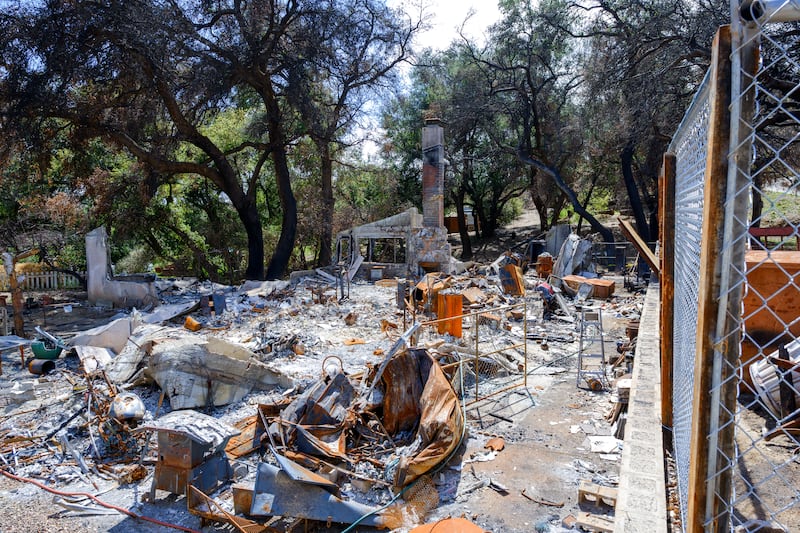
Most didn’t immediately understand that the way the fire stripped the vegetation in the hills above the community meant that soil erosion would follow and cause devastating flooding in the months to come.
“The damages from the fire were one thing. The debris flow that came through our properties here and the flood control channels was a whole ‘nother item,” said resident Steve Cuculic, an El Cariso homeowner, waterworks engineer and fire protection expert.
Saturday’s project was a massive undertaking to remove 5 tons of dirt from creek beds and waterways that filled in after rainstorms washed soil off the hills, resulting in flooded homes and septic fields where destroyed homes had been.
This is the third time the creeks needed to be cleared since the September fire. The first time, a larger group of volunteers mobilized. The second time, a few people from Team Rubicon, a veterans disaster relief organization, did the job on their own.
Who rallied to help?
No heavy equipment was allowed in or along the creek beds, so they had to be dug 8 feet wide and 8 feet deep by hand. Then all the dirt had to be hauled away.
So the third time would require renewed effort. Team Rubicon teamed up for the first time with JustServe, the online platform operated by the Church of Jesus Christ to match volunteers to needs, and a couple of dozen missionaries from the church’s California Riverside Mission.
The volunteers provided more than 400 hours of work to recreate the waterways in three parts of El Cariso and sandbag the area so future rains won’t fill the creeks again.

The new tool that helped 70 volunteers remove 5 tons of dirt in 1 day
The new owners of a company called Polymule don’t have a commercial product yet. Its 800 carts, originally designed for preppers, are larger than what a family might use for a camping trip, says co-owner Scott Stevens, who is working to reduce their weight while maintaining their unique features.
Stevens and his wife, Malena, have wanted to provide disaster relief for years, at least since 2017, when their friends, David and Brenda Smart, were leading a Latter-day Saint mission in Puerto Rico when the island was hit by Hurricane Maria and Hurricane Irma.
Scott Stevens approached the church recently to ask if it could use the Polymule cart, which he describes as a “modern-day handcart” for much rougher terrain.
“I’m a big believer that service should be our sermon,” Stevens said.
The 120-pound cart folds down and reassembles without tools. That led him to Team Rubicon, which asked for help with Saturday’s project in El Cariso.
The carts allow users to pull from the front using a bar that reaches across their waist. They can hold up to 400 pounds, and because they have a higher clearance than wheelbarrows and wheels made of solid rubber, they can roll over broken glass and can handle difficult terrain with ease.
Those who used it called it a force multiplier for disaster relief.
“My favorite part is definitely the bar in the front, so we can kind of sling it around our waist. It makes it a lot easier to pull things, especially up the hill,” said Ben Sullivan, a logistics associate for Team Rubicon who joined Saturday’s project. “You can grab it and lower it easily as well, and especially for me as a tall person, it’s saving my back.”

Sullivan also said the cart was easier to handle and pivot than a wheelbarrow.
“You operate it on the waist or just one hand, so it’s a little easier to handle overall, without tipping over,” he said.
David Smart, the former Puerto Rico mission president, is a former Mattel executive with manufacturing and product development experience. He is now a consultant for Polymule and also joined Saturday’s project. He and others said the carts equalized the strength of the volunteers, allowing women and teenagers to move as much as men like Sullivan.
One resident in her 60s was able to move 200 pounds of dirt at a time, Stevens said.
“It takes a load off the arms and back, so we were able to work all day with less fatigue,” Smart said. “It allows you to use the strongest parts of your back and legs.”
What the missionaries said about serving others
The Church of Jesus Christ has emphasized service for its proselytizing missionaries in recent years. The California Riverside Mission made two zones, or large groups of missionaries, available for Saturday’s project.
“For me, it just goes back to what the Savior wants for all of his children, right? He wants all of them to feel loved,” said Elder Michael Youngberg of Idaho. “I think service is a great way that you can do that. It’s a very, very visible sign that people can see and recognize. They’re like, ‘Oh, somebody loves and cares about me.‘”
Sister Ramona Coleman said missionaries always have hands to help.
“Service is a great way for us to be able to meet people and share God’s love and Christ’s love for everyone,” she said.
Stevens said the missionaries provided day-long energy.
“When you have a bunch of 18-to-23-year-olds, you really can move a lot of dirt very quickly with those young bodies,” he said.
Elder Ben Gray of Houston, Texas, said he loves to get “down and dirty” in a service project.
“Early morning service is a lot of fun,” he said. “Just get your hands dirty and then you just go shower and get right back to (missionary) work, it kind of gets you pumped up for the rest of the day, I’d say. I think it gives me a lot of a lot of joy, serving and helping others.”
Elder Youngberg said service also helps him personally.
“Your self-worth, your self-esteem, everything, it just all skyrockets,” he said.
My recent stories
Latter-day Saint leaders ready to assist those suffering after earthquakes in Myanmar, Thailand (March 30)
About the church
The 195th Annual General Conference will be held Saturday and Sunday in five sessions. Here’s how to watch, listen and follow the conference.
President Henry B. Eyring is featured in a new video in which he says the gospel has a “powerful effect on the mind” and that efforts to share it “will be remembered by those you love and teach.”
President Jeffrey R. Holland met with a supporter of underprivileged young women who is the first Black woman elected to Canada’s House of Commons.
The First Presidency announced the specific location for and released a rendering of the planned Retalhuleu Guatemala Temple.
Are you making plans to visit Historic Kirtland, Ohio? The church has created a new website to help you.
Don’t miss the Church News podcast with outgoing BYU athletic director Tom Holmoe.
What I’m reading
Ken Niumatalolo, a Latter-day Saint featured in the 2014 film “Meet the Mormons,” proved he can run a high-octane passing offense at San Jose State this year and now may be a candidate to be the new head coach at Stanford.
Here’s how “The Chosen” plans to reach 1 billion people worldwide. Here’s what Dallas Jenkins said about the theatrical success of Part 1 of “The Chosen: Last Supper.”
The Deseret News has two interesting new pieces about religious demographics. One is about how younger generations are giving religion a chance and the other is about how the gender gap in religion is changing.
Everyone’s talking about baseball’s crazy new torpedo bats. If you missed it, catch up by reading this piece.
Behind the scenes
